
This course introduces to the format and style of letter writing for academic purpose.
- Subject:
- Arts and Humanities
- Material Type:
- Lecture Notes
- Author:
- Archana Srinath
- Date Added:
- 09/12/2020

This course introduces to the format and style of letter writing for academic purpose.

This course offers analysis and practice of various forms of scientific and technical writing, from memos to journal articles, in addition to strategies for conveying technical information to specialist and non-specialist audiences. Comparable to 21W.780 Communicating in Technical Organizations, but methods in this course are designed to deal with special problems of advanced ELS or bilingual students. The goal of the workshop is to develop effective writing skills for academic and professional contexts. Models, materials, topics and assignments vary from term to term.
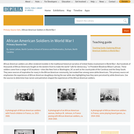
This collection uses primary sources to explore the experiences of African American Soldiers in World War I. Digital Public Library of America Primary Source Sets are designed to help students develop their critical thinking skills and draw diverse material from libraries, archives, and museums across the United States. Each set includes an overview, ten to fifteen primary sources, links to related resources, and a teaching guide. These sets were created and reviewed by the teachers on the DPLA's Education Advisory Committee.
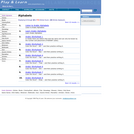
Mainly an Islamic site for children, this section of Play & Learn provides an introduction to all of the letters in the Arabic alphabet. There are a total of 74 printable worksheets, some of which provide practice for children to write the letters and some intended for children to recognize the letters in their connected and unconnected forms. The worksheets also provide practice with long vowels and tanween and the site provides downloadable audio pronunciations of each letter.
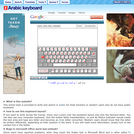
This website allows access to an Arabic keyboard for those who are on computers that do not have access to Arabic script. Users can move the mouse over an Arabic keyboard displayed on the site to 'type' in Arabic words, and then copy and paste the Arabic to the document or website they are using.
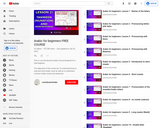
Master the Arabic Letters is a video series consisting of eight videos that introduce viewers to the names, shapes, and sounds of the Arabic letters. The videos also explain how to join up the letters in writing and make sure that differences in pronunciation are carefully demonstrated.
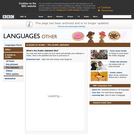
This page contains a list of all the letters in the Arabic alphabet, organized in seven groups. Users can listen to a native speaker read the names of the letters online or download the clips for home use. Users can also print out selected letters. The site also lists information about writing in Arabic, including the short vowel system, joining the Arabic letters together, and the names for symbols commonly used in email addresses.
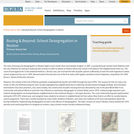
This collection uses primary sources to explore school desegregation in Boston. Digital Public Library of America Primary Source Sets are designed to help students develop their critical thinking skills and draw diverse material from libraries, archives, and museums across the United States. Each set includes an overview, ten to fifteen primary sources, links to related resources, and a teaching guide. These sets were created and reviewed by the teachers on the DPLA's Education Advisory Committee.
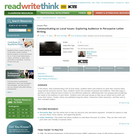
Students will research a local issue, and then write letters to two different audiences, asking readers to take a related action or adopt a specific position on the issue.

In this interdisciplinary seminar, we explore a variety of visual and written tools for self exploration and self expression. Through discussion, written assignments, and directed exercises, students practice utilizing a variety of media to explore and express who they are.
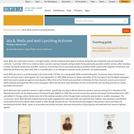
This collection uses primary sources to explore Ida B. Wells and anti-lynching activism. Digital Public Library of America Primary Source Sets are designed to help students develop their critical thinking skills and draw diverse material from libraries, archives, and museums across the United States. Each set includes an overview, ten to fifteen primary sources, links to related resources, and a teaching guide. These sets were created and reviewed by the teachers on the DPLA's Education Advisory Committee.
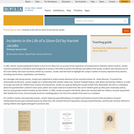
This collection uses primary sources to explore Incidents in the Life of a Slave Girl by Harriet Jacobs. Digital Public Library of America Primary Source Sets are designed to help students develop their critical thinking skills and draw diverse material from libraries, archives, and museums across the United States. Each set includes an overview, ten to fifteen primary sources, links to related resources, and a teaching guide. These sets were created and reviewed by the teachers on the DPLA's Education Advisory Committee.
![The Kip Project [EDU 538 - SU1]](https://img.oercommons.org/160x134/oercommons/media/upload/materials/screenshots/authoring-authoredmaterial-41278.png)
An interactive lesson on developing literacy skills for young adult women, for ages 15 and above. This lesson focuses on the recognition and identification of the letters A, B, C, T.
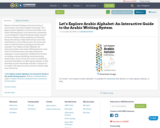
Based on the latest findings at the intersection of neuroscience and modern digital technology, "Let’s Explore Arabic Alphabet: An Interactive Guide to the Arabic Writing System" is an interactive, multimedia course designed to build foundational skills required for fluent reading, writing, speaking, and listening. Along with aiming to help students learn and retain information at a more efficient pace, the course also seeks to make the entire learning process fun and enjoyable.
"Let’s Explore Arabic Alphabet: An Interactive Guide to the Arabic Writing System" avails itself of vivid illustrations and easily understood language to convey important, building-block lessons on reading, writing, identifying, and pronouncing Arabic letters. As an e-book, the course is available for download with iBooks on a Mac laptop, desktop, or iPad. Assuming no prior knowledge of Arabic on the part of its readers, the material is best suited for children eight years old and up.
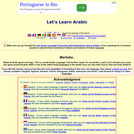
Let's Learn Arabic is a tutorial designed to introduce users to reading and writing in Arabic. The tutorial is composed of a total of five lessons and begins with a brief historical background about the language. The first and second lessons provide an introduction to the letters that make up the alphabet. The next three give a number of example demonstrating how to combine the letters into words. Audio files demonstrating the names of all of the letters are provided.

There is a saying that states, “If you write it down, it is more likely to come true.”In the teaching field, I get several students who come into my classroom with different objectives. Some students want to make an A, others just want to pass, some want to make a speech without fainting, etc.. Over the semesters, I found that only half of my students accomplish what they set out to do. Some students wind up with certain circumstances (illness, work, poor romantic relationship choices etc.) that interferes with their coursework, but for the students, who are perfectly capable of achieving their goal(s), they sometimes fall short of their goal(s). So I decided to try something innovative and creative with my students. It is a three- part activity, which I hope you and your students will benefit as much as mine did.

This is an activity for Kindergarten-1st Grade. The idea is to build phonemic awareness skills and sight word skills. Students make a 5 page letter/word book. Each student chooses letters from their name or will spell their entire name. taking different mediums(fabric, art items, puzzles, paper) and glue, students create their letters/names or words on card stock.
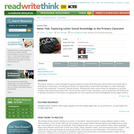
Students demonstrate their letter/sound knowledge by working with name cards and sharing observations about their classmates names, giving teachers an opportunity to assess knowledge in a meaningful context.
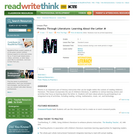
Students learn about phonics by focusing on the letter m and participating in an integrated array of activities, including reading, writing, mathematics, music, art, and technology.
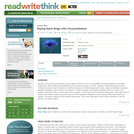
In this twist on traditional bingo, the game boards feature students' names, and students answer questions designed to help them learn more about one another when their names are called.